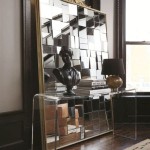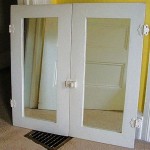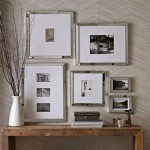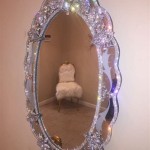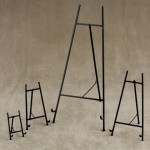Wall Mirror Mounting Hardware: A Comprehensive Guide
Selecting the appropriate hardware for mounting a wall mirror is crucial for both safety and aesthetics. A poorly secured mirror poses a risk of falling and breaking, while unsuitable hardware can detract from the mirror's appearance. This guide provides a detailed overview of various mounting hardware options, their applications, and best practices for installation.
1. Understanding Weight and Size Considerations
The first step in choosing the right hardware is determining the mirror's weight and dimensions. Heavier and larger mirrors require more robust hardware to ensure secure mounting. Consult the manufacturer's specifications for accurate weight information. Measure the mirror's height and width to determine the appropriate spacing and quantity of mounting points.
2. Types of Wall Mirror Mounting Hardware
Various hardware options cater to different mirror sizes, weights, and mounting styles. Understanding the advantages and disadvantages of each type helps in making an informed decision.
J-Hooks: J-hooks are a common choice for lighter mirrors and offer a simple installation process. They hook onto the back of the mirror and are then secured to the wall with screws. However, they may not be suitable for heavier mirrors or those with a thin frame.
D-Rings and Wire: This classic method involves attaching D-rings to the back of the mirror and connecting them with wire. The wire is then hung on hooks or screws mounted on the wall. This method provides good stability and is suitable for medium to heavy mirrors. Ensure the wire is appropriately rated for the mirror's weight.
French Cleats: French cleats offer a robust and secure mounting solution for heavier mirrors. One part of the cleat is attached to the wall, and the other to the back of the mirror. The two pieces interlock, creating a strong connection. This method is particularly suitable for large, heavy mirrors and provides a flush mount against the wall.
Mirror Clips: Mirror clips grip the edges of the mirror and are secured to the wall with screws. They provide a minimalist look and are suitable for thinner mirrors. However, they offer less stability compared to other methods and may not be suitable for heavy mirrors.
Adhesive Mounting Systems: For lighter mirrors, adhesive mounting systems provide a no-drill solution. These systems use strong adhesive strips to attach the mirror directly to the wall. It's essential to ensure the wall surface is clean, smooth, and suitable for adhesive application. Check the manufacturer's specifications for weight limitations.
3. Wall Type Considerations
Different wall types require different fasteners. Drywall requires specific anchors to ensure a secure hold, while concrete or brick walls may require masonry anchors and specialized drill bits.
Drywall Anchors: Various drywall anchors exist, including plastic expansion anchors, toggle bolts, and molly bolts. Choose the appropriate anchor based on the mirror's weight and the type of drywall.
Masonry Anchors: For concrete or brick walls, masonry anchors are necessary. These anchors are designed to expand within the wall material, providing a secure hold. Predrilling the holes with the correct size drill bit is crucial for proper installation.
4. Safety Precautions During Installation
Safety should be a primary concern during mirror installation. Always wear appropriate safety glasses when drilling and handling hardware. Use a stud finder to locate wall studs for added support, especially for heavier mirrors. If unsure about the installation process, consult a professional.
5. Choosing Hardware for Aesthetics
While functionality is paramount, the hardware's aesthetic impact should also be considered. Choose hardware finishes that complement the mirror's frame and the surrounding decor. For a minimalist look, consider concealed mounting systems or clips. For a more decorative approach, choose decorative hooks or brackets.
6. Preparation and Planning
Before beginning the installation process, carefully plan the mirror's placement and mark the desired location on the wall. Measure twice to ensure accuracy. Gather all necessary tools and materials, including a level, measuring tape, drill, screwdriver, and appropriate fasteners.
7. Seeking Professional Assistance
For particularly large, heavy, or antique mirrors, it is recommended to seek professional installation assistance. A professional installer has the expertise and tools to ensure safe and secure mounting, minimizing the risk of damage to the mirror or the wall.
By carefully considering the factors outlined in this guide, individuals can select the appropriate wall mirror mounting hardware to ensure a safe, secure, and aesthetically pleasing installation.

Glacier Bay Mirror Mounting Hanging Hardware Kit 805254 The Home Depot

12 Clear Mirror Holder Clips Wall Mounting Transpa Brackets S Anchors 1 Baker

Masterpiece Decor Plastic Mirror Mounting Clips 6 Pack 82001 The Home Depot

Invisible Mirror Clip Richelieu Hardware

Mainstays Mirror Hardware Com

Mirror Holder Clamp Kit Transpa Plastic Installation Crystal Hanging Hardware Frameless Used For Wall And Fixed Box Door With Components Temu

Hasthip Mirror Mounting Clip For Fixing On Flat Surface Plastic Glass Holder In Buy

Hometrends Heavy Duty Mirror Mounting Clips 6 Pack Wall Mount Set Ca

Bathroom Mirror For Wall Black

Wooden Rectangular Wall Mirror With Mounting Hardware Brown

